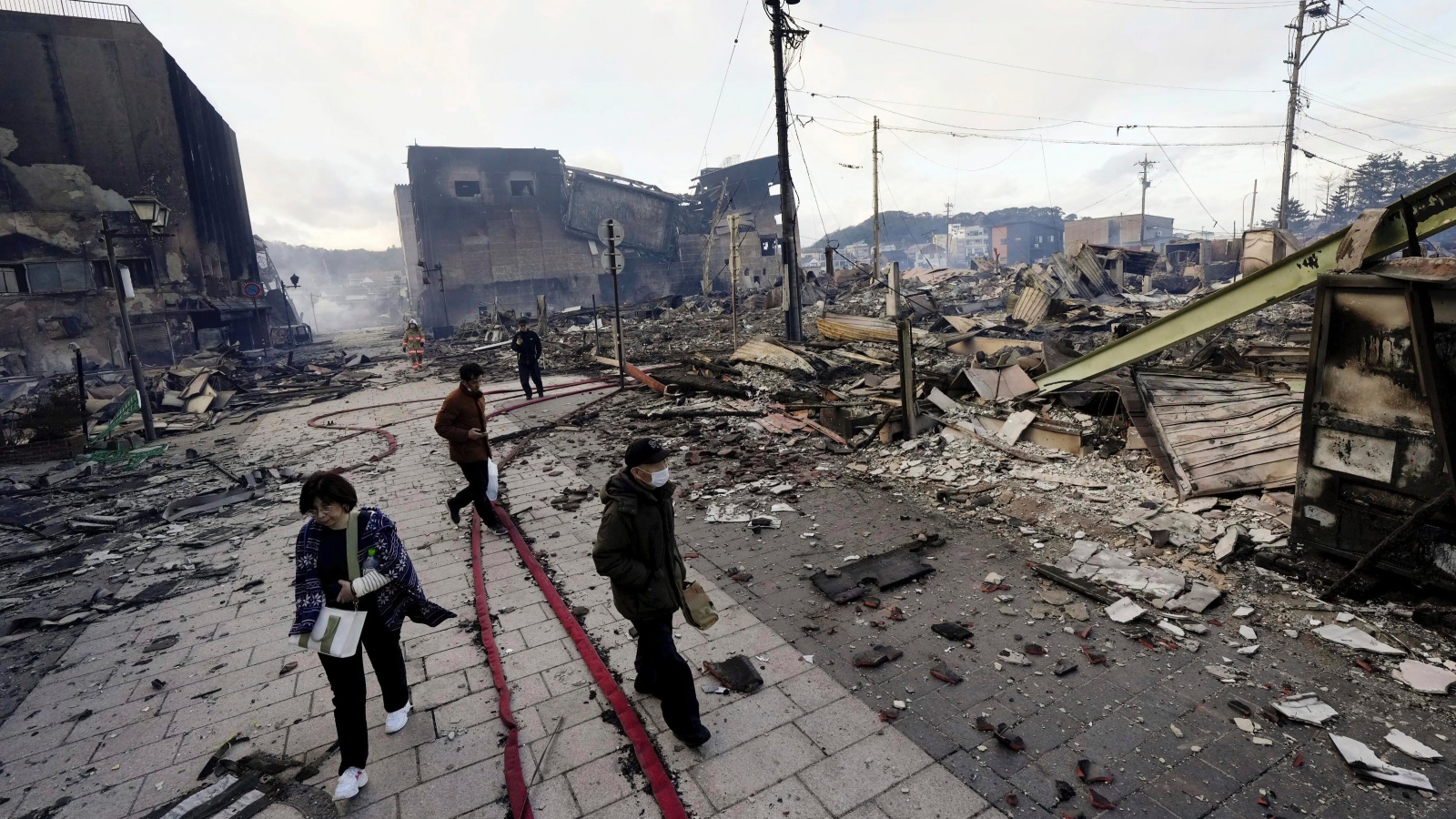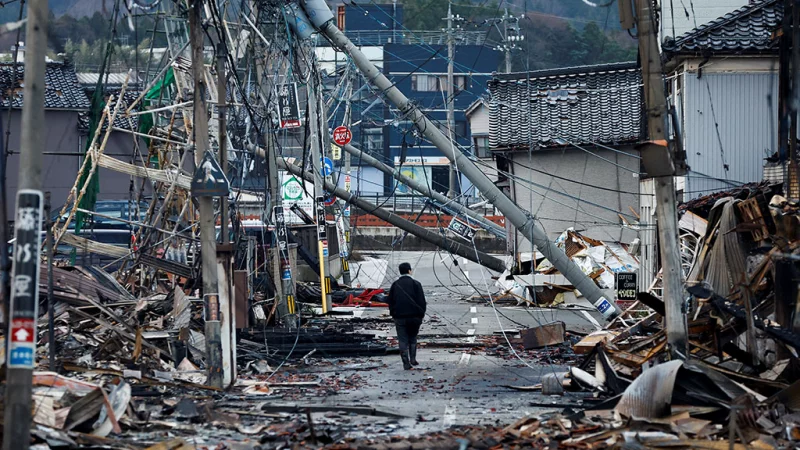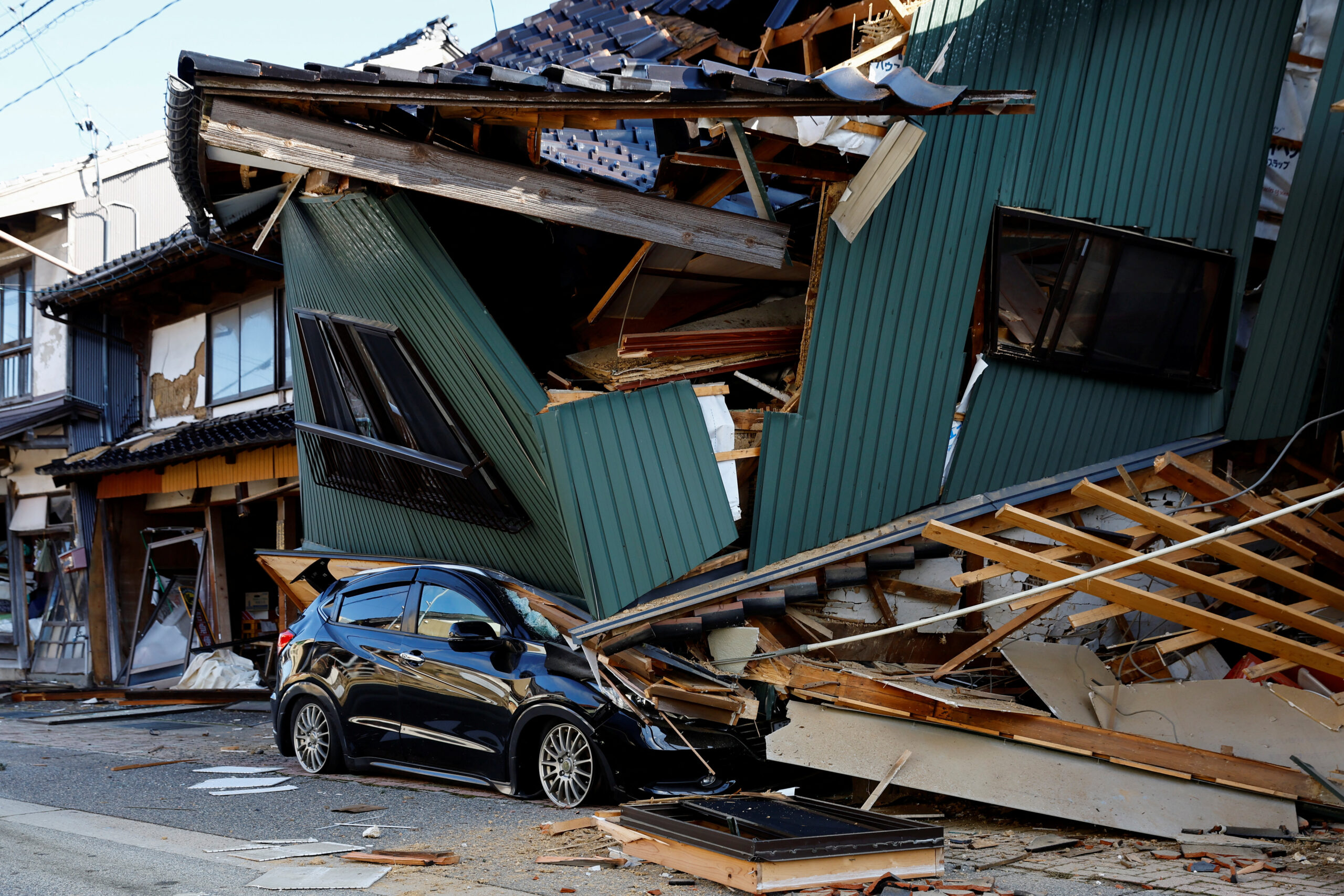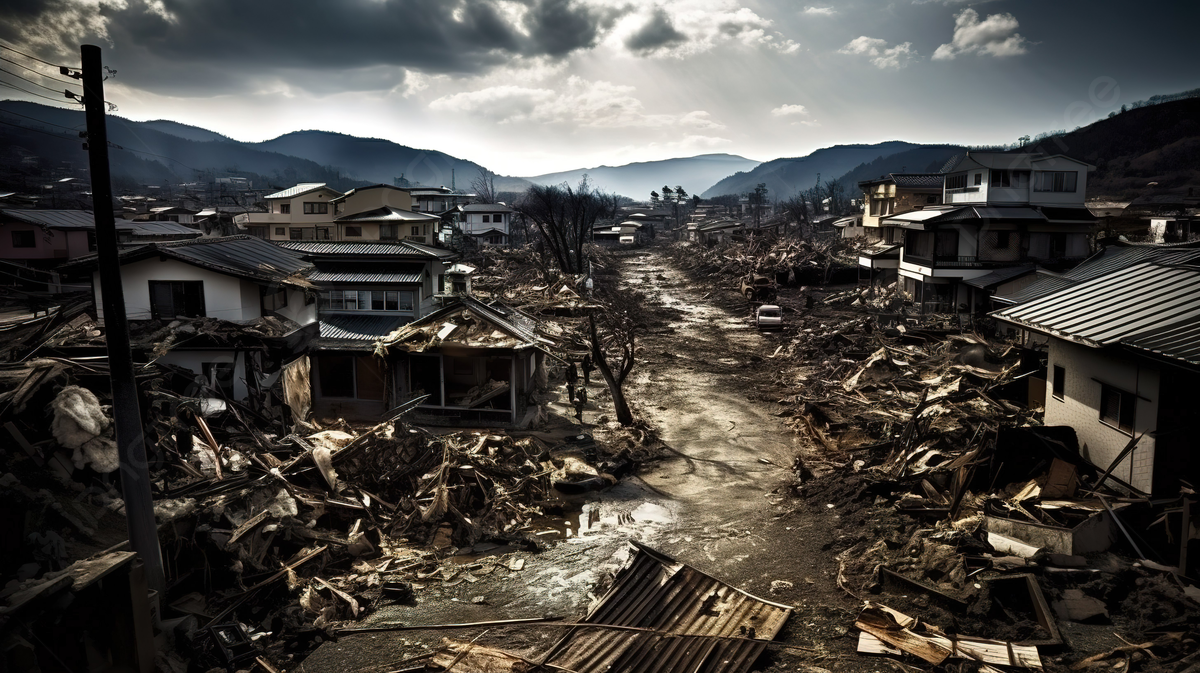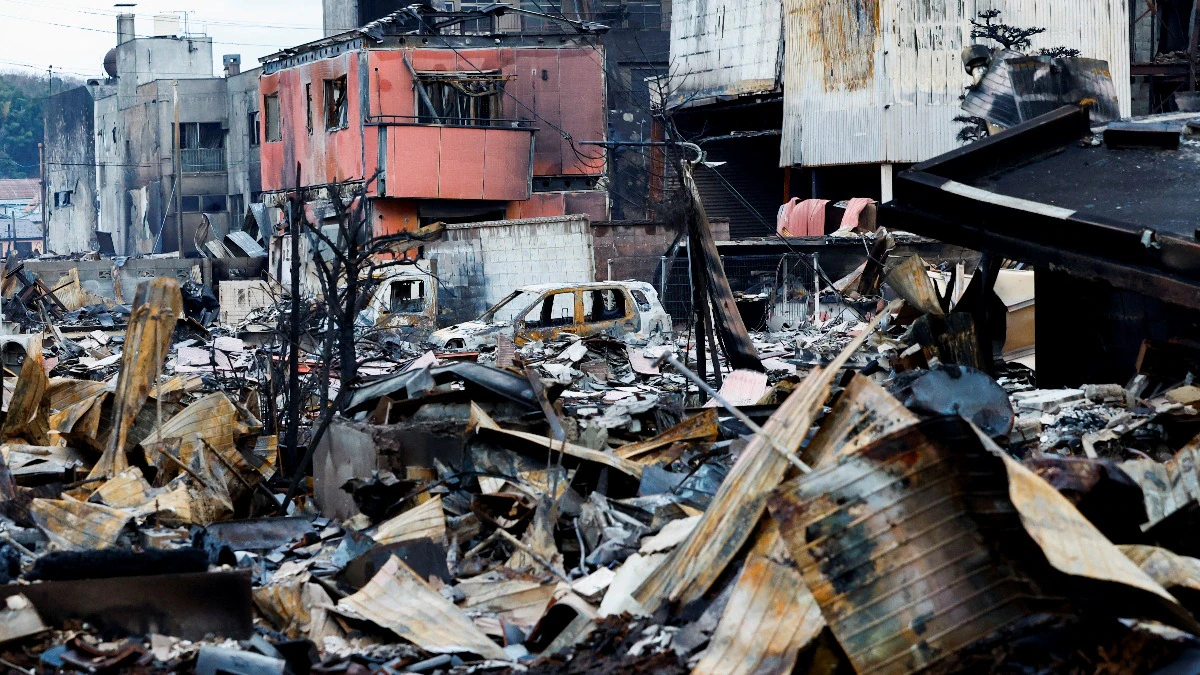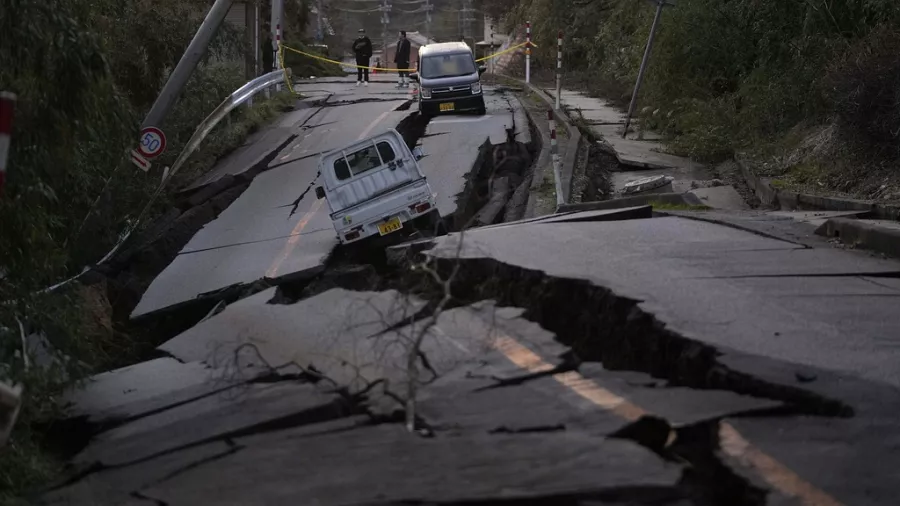Introduction :
Japan experienced a “Powerful Earthquake Strikes Japan” & devastating earthquake of significant magnitude, striking a severe blow to the region and impacting millions of lives. This powerful earthquake, with its epicenter located in, is a poignant reminder of Japan’s vulnerability to seismic activity. As one of the most earthquake-prone countries in the world, Japan has long been at the forefront of earthquake preparedness and resilience. This event underscores both the country’s ongoing challenges and its robust response mechanisms.
Details of the Earthquake :
Magnitude and Epicenter :
Japan was shaken by a powerful earthquake that registered on the Richter scale, one of the most significant seismic events in recent years. The earthquake’s epicenter was located, kilometers below the surface, according to the Japan Meteorological Agency (JMA). The tremors were felt across a vast region, with major urban centers like Tokyo, Osaka, and Yokohama experiencing intense shaking.
The earthquake struck at, during a time when many people were. The suddenness of the event caught residents by surprise, causing widespread panic and triggering the activation of Japan’s sophisticated earthquake alert system. In, buildings swayed violently, and transportation systems were brought to a standstill as safety protocols were enacted.
Time and Duration :
The earthquake struck at local time, with the tremors lasting for approximately minutes. The timing of the quake played a crucial role in its impact, as it occurred during [insert context, e.g., rush hour, late at night], which affected the extent of damage and casualties.
Immediate Impact :
Geographic Areas Affected :
The earthquake’s effects were felt across a broad region, including major cities such as Tokyo, Osaka, and Yokohama. In some areas, the shaking was severe enough to cause extensive damage. Rural areas were also affected, with infrastructure suffering significant impacts. The widespread nature of the quake required a coordinated response across multiple regions.
Damage and Destruction :
The earthquake caused considerable damage to both residential and commercial buildings. Many structures, particularly older ones, collapsed or sustained severe damage. Critical infrastructure, including roads, bridges, and utilities, was disrupted. Reports indicate that [insert number] buildings were damaged or destroyed, and [insert number] roads and bridges were affected. Utilities such as electricity, water, and gas experienced outages, complicating recovery efforts.
Casualties and Injuries :
Early reports suggest that there have been casualties and injuries. Emergency services are actively involved in search and rescue operations, working to locate survivors and provide medical care. The immediate focus is on addressing the needs of the injured and ensuring that those affected receive the necessary support.
Aftershocks :
Following the main earthquake, a series of aftershocks have been recorded. Some of these aftershocks have been strong enough to cause additional damage. Authorities have warned residents to expect ongoing seismic activity and advised them to stay vigilant.
Response and Recovery Efforts :
Emergency Services :
The Japanese government has mobilized emergency services to respond to the crisis. Firefighters, police, and medical teams are working around the clock to assist those affected. Emergency shelters have been established to provide temporary accommodation for displaced individuals. Efforts are focused on rescuing those trapped in debris, providing medical care, and distributing relief supplies.
Government Actions :
In response to the earthquake, the government has declared a state of emergency in the affected regions. This declaration allows for the rapid deployment of resources and support. The government has also requested international assistance, and relief supplies are being coordinated with global partners. Infrastructure repair teams are working to restore essential services and assess the extent of the damage.
Public Safety Measures :
Authorities have issued safety advisories to the public, including guidance on how to prepare for aftershocks and how to stay safe in damaged areas. Public communications have been crucial in ensuring that residents are informed about the situation and understand the steps they need to take for their safety.
Historical Context :
Previous Earthquakes :
Japan has a history of significant earthquakes, including the Great East Japan Earthquake of 2011 and the Kobe Earthquake of 1995. These events have shaped Japan’s approach to disaster preparedness and response. The country has invested heavily in earthquake-resistant infrastructure and early warning systems to mitigate the effects of such disasters.
Seismic Activity in Japan :
Japan’s location on the Pacific Ring of Fire makes it highly susceptible to seismic activity. The country’s complex tectonic setting involves the convergence of multiple plates, including the Pacific, Philippine Sea, and Eurasian plates. This geological activity results in frequent earthquakes and volcanic eruptions.
Impact on Daily Life :
Disruption to Daily Activities :
The earthquake has caused widespread disruptions to daily life. Public transportation systems, including trains and buses, have been affected, with delays and cancellations reported. Many businesses and schools in the affected areas have been temporarily closed to ensure safety. The disruption to daily routines has added to the challenges faced by residents.
Community Response :
Local communities have come together to support each other in the wake of the disaster. Volunteers and organizations are providing essential services, including food, water, and medical aid. Community centers are being used as temporary shelters and coordination points for relief efforts. The spirit of cooperation and mutual support has been a crucial aspect of the response to the earthquake.
International Response :
Global Support :
The international community has expressed solidarity with Japan and offered support in various forms. Countries around the world have sent aid, including financial contributions, relief supplies, and technical expertise. International organizations are working closely with Japanese authorities to provide assistance and coordinate relief efforts.
Media Coverage :
The earthquake has received extensive media coverage globally. News outlets have provided regular updates on the situation, including live coverage of rescue operations and interviews with survivors. The media plays a critical role in keeping the public informed and raising awareness about the needs of those affected.
Conclusion
The recent powerful earthquake in Japan serves as a stark reminder of the country’s vulnerability to seismic events. The immediate focus is on addressing the damage, supporting those affected, and ensuring a swift recovery. As Japan navigates the challenges posed by this disaster, the global community stands united in its support and solidarity.

